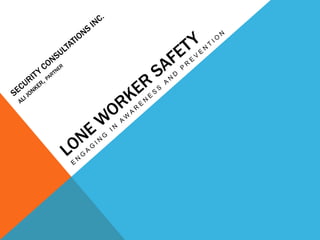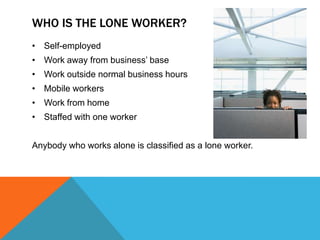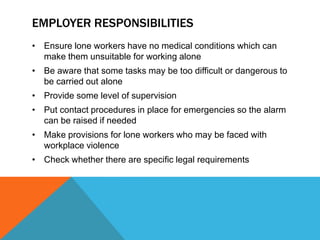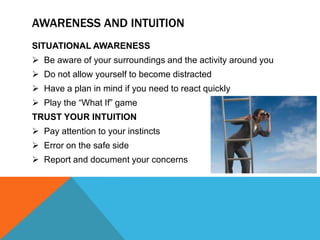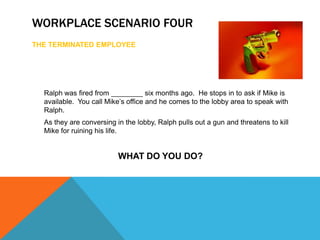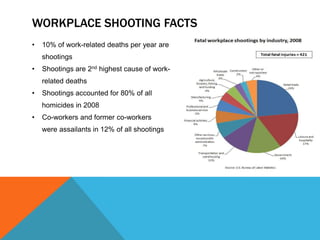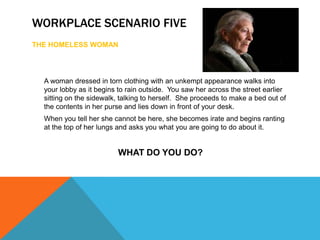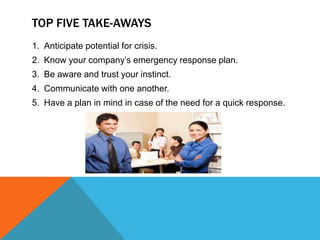The training objectives are for participants to understand the importance of safety awareness and planning, learn emergency communication procedures, and practice applying safety protocols through case scenarios. The document then provides definitions and considerations for lone workers, safety concerns, employer and employee responsibilities, and tools for safety and incident prevention such as situational awareness, communication systems, and checklists. It concludes with workplace scenarios applying the safety practices and references for further information.
